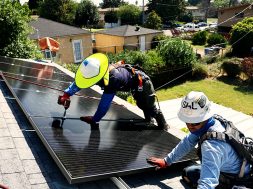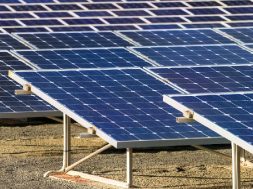
Almost 14 lakh houses in India are now ‘green’
India now has an ambitious target of having 10 billion sq ft green building footprint by 2022. It is expected to increase the green footprint by around 10%.
Almost 14 lakh houses in India have chosen to go for a ‘green building’ tag which amounts to about 6.33 billion sq ft. It however constitutes mere 5% of total residential properties present in the country.
India now has an ambitious target of having 10 billion sq ft green building footprint by 2022. It is expected to increase the green footprint by around 10%.
Green Homes
Of the total, around 155 crore sq ft of green buildings are under IGBC Green Homes. According to V Suresh, chairman of the Indian Green Building Council (IGBC) and former CMD, HUDCO, “We want to make India number one in the world by having 10 billion sq ft of green building footprint. Currently, there are 25 ratings under IGBC for buildings. All buildings in India should have green components and that is what we are now targeting. We have already achieved 6.33 billion sq ft and will successfully reach our target by 2022.”
“If we could increase the green homes coverage to 10%, it will be good for the Indian environment. It is important to have hospitals, schools and all other buildings having a green base. India needs a green revolution to ensure that the impact of pollution is mitigated,” added Suresh.
India is ranked third after China and Canada, with more than 752 LEED-certified (Leadership in Energy and Environmental Design) projects. This is as per the LEED annual top 10 countries and regions, announced by USGBC (US Green Building Council).
Why should you opt for a green building?
A green building is one which uses less water, improves energy efficiency, conserves natural resources, generates less waste and provides healthier spaces for occupants, as compared to a conventional building.
The demand for green features in residential and commercial buildings is increasing. Rising pollution in the country is making people choose green homes with features such as water harvesting, solar energy, green surroundings, natural lighting and effective waste management, among others.
“There is a misconception that green buildings are expensive. The construction cost is a mere 1% higher for green buildings”, says Suresh. You can save almost 30-40% on water and energy consumption in a green building. “We do not need to use drinking water for flushing. Green buildings use recycled water for flushing. Similarly, today, the average electricity bill a household pays is between Rs 2,000-5,000 per month. Surprisingly, you can save almost 40% on your electricity bill in a green home.”
Energy efficient lamps and bulbs can bring down the electricity cost in a society or individual unit. Solar panels can produce electricity which can be used for lighting. Similarly, eco-friendly building materials, locally manufactured, can be sourced from locations within 400 km of the project site. The low flush water fixtures can save money on water bills.
Today, it is easy to have green features installed in even completed projects.
The use of renewable resources, eg, using sunlight through passive solar, active solar, and photovoltaic equipment, and using plants and trees through green roofs, rain gardens and reduction of rainwater run-off, can be implemented easily. Many RWAs and cooperative societies are adopting green features for a healthy lifestyle of residents. For instance, solar panels on rooftops can be installed even after the project is complete. In societies that do not have water harvesting systems, those can be installed even after a building is occupied.
New residential projects are incorporating environment-friendly components during construction itself. “Pollution in NCR has become a major health issue, especially during the onset of the winter season. As a responsible developer, we ensure that all construction activities across projects are covered with a green net, regular water sprinkling at the development site ensures no dust is spread in the air and PUC is done of all vehicles at the construction site to reduce pollution emissions. We also ensure all labourers and site engineers and staff wear approved masks to ensure their safety as well,” said Prasoon Chauhan, CEO, HomeKraft, an ATS company.
IGBC has a marking system for green buildings. More green features means higher green ranking.
Business potential
IGBC estimates the market potential for green building products and technologies to be about USD 300 billion by 2025. There is a growing acceptance and demand for green homes. Builders and buyers are keen to know about the green technology. “Large companies such as Amazon, Google and others, demand green features before leasing out properties. Home buyers are also asking for green features before buying new homes. The demand for green homes is rising every day,” explains Suresh.
Home buyers today have started demanding green features in products apart from the regular criteria for selection of products such as quality, cost, etc. State Governments, including West Bengal, Rajasthan, Punjab, Haryana, Uttar Pradesh, Himachal Pradesh, Jharkhand and Maharashtra (Pune) are offering additional Floor Area Ratio (FAR) ranging from 5 to 15% for IGBC silver, gold and platinum rated projects.
While policy initiatives promote adoption of green building practices, cost savings and sustainable living practices attract buyers of environment-friendly homes with green features.















